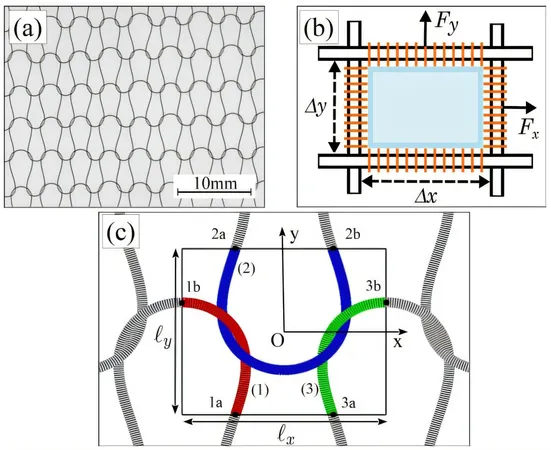
The Surprising Science Behind Your Cozy Christmas Sweater: How Friction Influences Knit Shapes
2024-12-30
Author: Ming
It turns out that the warm embrace of your beloved Christmas sweater is the result of some fascinating physics! A groundbreaking study from a team of physicists at the University of Rennes, Aoyama Gakuin University, and the University of Lyon reveals that friction between fibers is crucial for the unique shapes of knitted fabrics. The findings, detailed in their paper published in *Physical Review Letters*, challenge our understanding of textile mechanics.
While we've often pondered over why our knitted sweaters keep us warm despite the apparent gaps between stitches, much less attention has been paid to the shapes that these garments can assume. This research aims to fill that gap by exploring the underlying mechanics that allow knitted fabrics to take on various forms.
Led by researchers Jérôme Crassous, Samuel Poincloux, and Audrey Steinberger, the team focused their experiments on a common knitting technique known as stockinette stitch, which involves creating interlocked loops with knitting needles. They knitted a piece of fabric with a grid of 70x70 stitches and then utilized a biaxial tensile machine to stretch and manipulate this material in diverse ways.
What they discovered was remarkable—rather than settling into a single shape, the fabric responded to different stretching methods by exhibiting what researchers term 'metastable shapes.' These are forms that can exist in a stable state, though not necessitating a permanent structure. The shapes varied significantly in length and width based on the twisting applied, indicating a surprising versatility in how knitted fabrics can be formed.
To further analyze the mechanics at play, the researchers ran simulations that replicated the behavior of the fibers under varying conditions. These simulations confirmed their experimental results and also allowed them to manipulate a previously unchangeable factor in real life—the friction between the fibers. They found that when friction was reduced to zero, the fabric could only assume one single shape. This finding underscored the vital role that friction plays in determining the myriad forms that knitted textiles can take.
As the festive season approaches, this newfound knowledge about the science of knitting adds an extra layer of appreciation to your cozy Christmas sweater. From intricate designs to the very fabric of the garment, understanding how friction influences knit shapes might just make you look at your favorite seasonal attire in a whole new light. So next time you slip on that festive knit, know that it’s not just stylish—it’s a masterpiece of physics!




 Brasil (PT)
Brasil (PT)
 Canada (EN)
Canada (EN)
 Chile (ES)
Chile (ES)
 Česko (CS)
Česko (CS)
 대한민국 (KO)
대한민국 (KO)
 España (ES)
España (ES)
 France (FR)
France (FR)
 Hong Kong (EN)
Hong Kong (EN)
 Italia (IT)
Italia (IT)
 日本 (JA)
日本 (JA)
 Magyarország (HU)
Magyarország (HU)
 Norge (NO)
Norge (NO)
 Polska (PL)
Polska (PL)
 Schweiz (DE)
Schweiz (DE)
 Singapore (EN)
Singapore (EN)
 Sverige (SV)
Sverige (SV)
 Suomi (FI)
Suomi (FI)
 Türkiye (TR)
Türkiye (TR)
 الإمارات العربية المتحدة (AR)
الإمارات العربية المتحدة (AR)